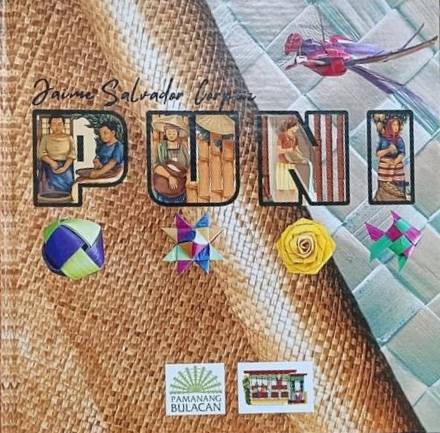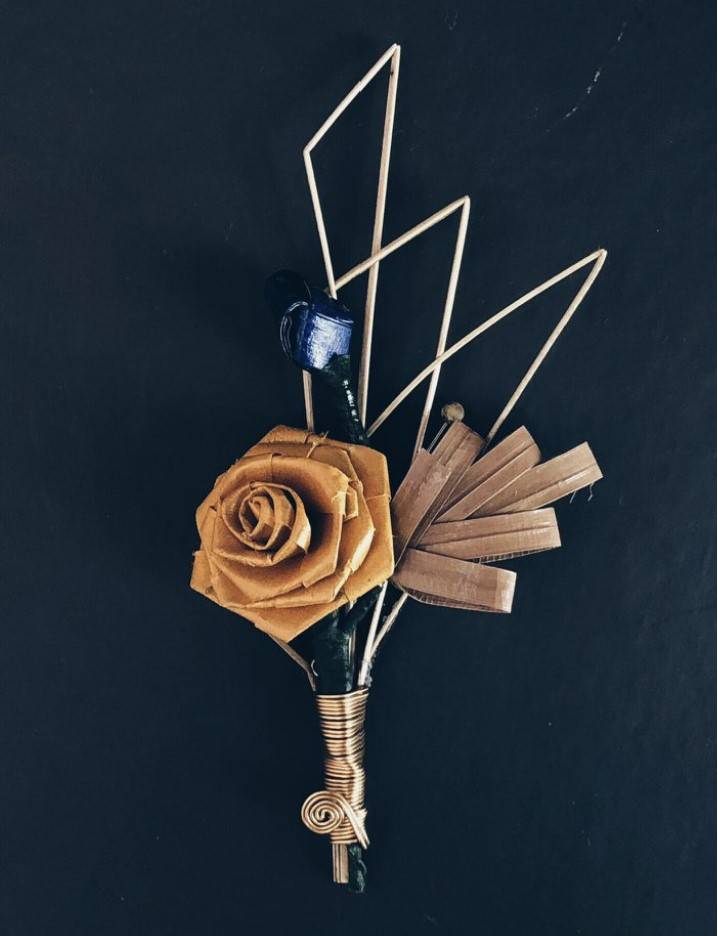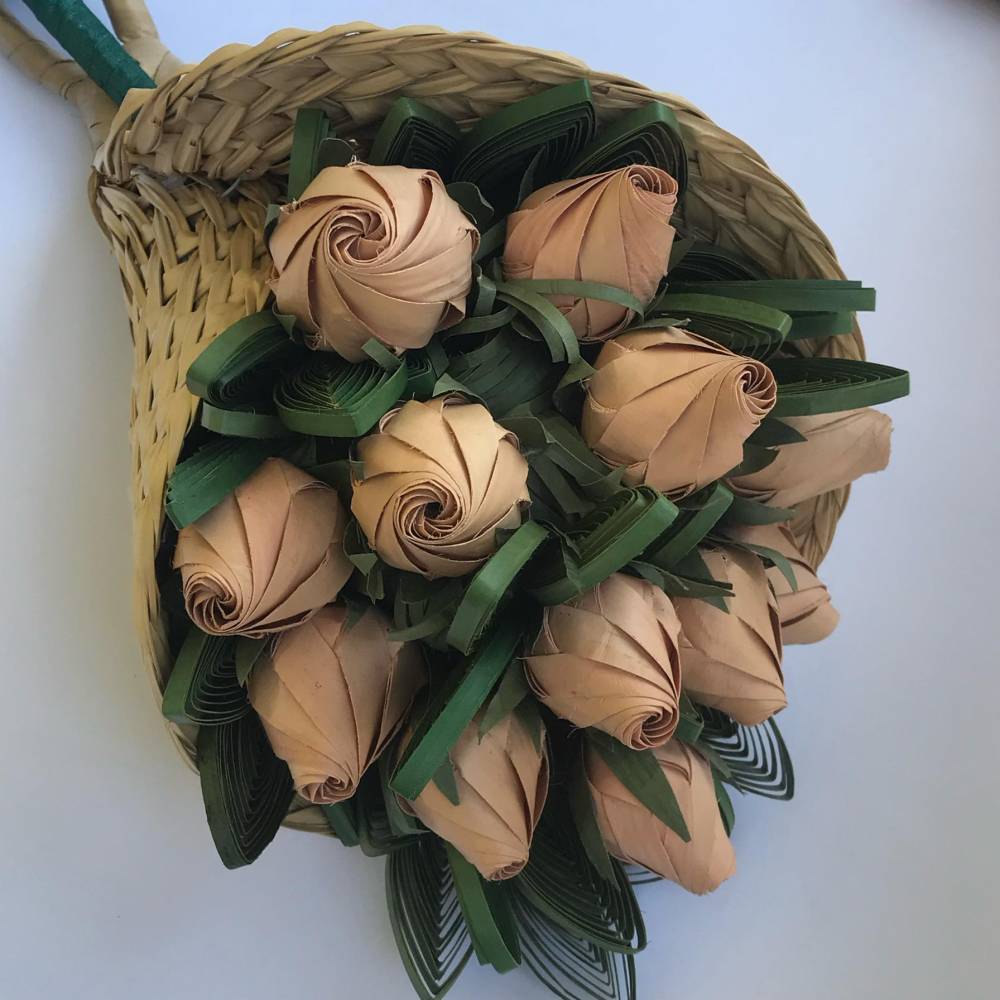Malolos’ once-dying leaf art is thriving again

This year, Feb. 22 marked the 135th anniversary of Jose Rizal’s letter in 1889 to the women of Malolos, which, among others, hailed them for championing women.
On the same day, a book on Malolos’ traditional craft, puni, was launched, bringing to the fore this once dying art of Bulacan.
Titled “Puni: Sining ng Malolos, Pamanang Bulakenyo” (Art of Malolos, Bulacan’s Heritage), the book is about what its author, Jaime Corpuz, describes as the “resurrected art” of leaf folding.

He said puni needs to be maintained and safeguarded since this is not only part of the identity of the city or the province, but of the country as a whole.
One of those who attended the launch was Noemi Paguia-Garcia, a punikera or magpupuni who learned the art when she was young through her childhood friends and a house helper.
Together with Maria Lynda Tubid, Marichelle Santos, the late Rheeza Hernandez and more than five others, they constitute the modern-day “Women of Malolos” who, this time, advocate for the preservation and continued practice of this age-old tradition.

Traditional art
Puni is the Bulacan Tagalog term for decorating something through the use of leaf fronds.
The leaves are stripped, folded, plaited, or braided and woven into different items such as toys, food containers and for religious purposes.
The preferred leaf today is that of buri or buli palm, although also utilized are the leaves of the coconut, pandan, and sasa or nipa.
Before, the common designs or puni types were bola (ball), isda (fish) and pito (whistle), the usual ones also found in other parts of the country. Apart from these, the traditional ones also include the alimango (crab), hipon (shrimp), pagong (turtle), paru-paru (butterfly) and tipaklong (grasshopper).
Through research and at times chance, the designs became diverse and were given different uses such as earrings, bracelets, necklaces, rosaries, bookmarks, hair clips and accents on costumes.

Cultural scholar Felice Prudente Sta. Maria has said that “puni should be in every Filipino’s vocabulary, just as origami is in a Japanese’s.”Resurgence
In a promotional video on puni in 2020, Hernandez said it was about two decades ago that the traditional art form was again regularly promoted through food festivals hosted by her aunt, the culinary historian Milagros Enriquez. At these festivals, an area was always set aside where puni was demonstrated and taught to festival participants.
In the video, Hernandez expressed hope that at least one of those who learned from her would embrace and continue the craft, which she described then as a dying art form.
Such efforts eventually paid off with Hernandez and her students Santos and Tubid, and mentor Garcia, establishing the group called Puni de Malolos in 2009.
The group promoted puni through lectures and demonstrations in public and private events, mainly those done by the Cultural Center of the Philippines and the National Commission for Culture and the Arts.
Garcia became the creative director and master artisan of the social enterprise she and her daughter-in-law Jonnah Garcia put up in 2017. Called Punique, this enterprise trained women in Malolos how to make puni, giving them livelihood and something to be proud of as Maloleños.
Today, Punique employs about 10 women and one man who execute traditional designs as well as the innovations introduced by Noemi and Jonnah, which include fashion accessories, home decor, and bridal bouquets. Both women also participate in lectures and demonstrations in and out of the province to promote the art form.
The younger Garcia said puni is indeed no longer dying and it has now been revived, with innovations introduced. The innovations, she said, are to “bridge the past to the modern generation and for the art to stay relevant.”
She said the advocacy “is to let people know that Malolos and Bulacan have this form of traditional art,” and it is important for it to be shared. With demand increasing, she said they are now planning to expand and offer new products that are functional and decorative.

Recognition
Santos said they are striving to save puni because, “If this will not be safeguarded and will eventually be lost, even the stories about it will be lost, too.”
She added, “Kailangang patuloy na ituro para hindi maglaho ang sining na ipinamana sa atin ng ating mga ninuno (It is important that we continue to teach the art handed down to us by our ancestors).”
Santos admitted that she was at first hesitant to learn puni and had no interest at all, but Hernandez prodded her to persevere. When Hernandez passed away in 2002 due to a lingering illness, Santos mustered enough courage to step in and fill in the former’s shoes.
It was an opportune time, she said, explaining that she, Tubid and Garcia took on different roles in safeguarding the art form, with her taking the helm as a cultural worker promoting it; Tubid as a teacher teaching it to students; and Garcia as a social entrepreneur giving livelihood to the women of Malolos.
Although still sad over the passing of her friend, Santos is grateful to Hernandez. “Although I am sad since I am now on my own, whenever I go to the different places in the country and abroad to teach and promote puni, I’m happy that puni has gone places and is now widely known,” she said.
“Napansin na siya sa mahigit dalawang dekadang pagsusumikap upang ito ay makilala (It has attracted attention in the more than 20 years of efforts to have it recognized),” she added — INQ

















